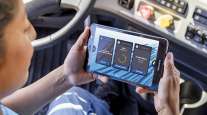With ELD Rollout in Rearview Mirror, Focus Turns to Fleet Management
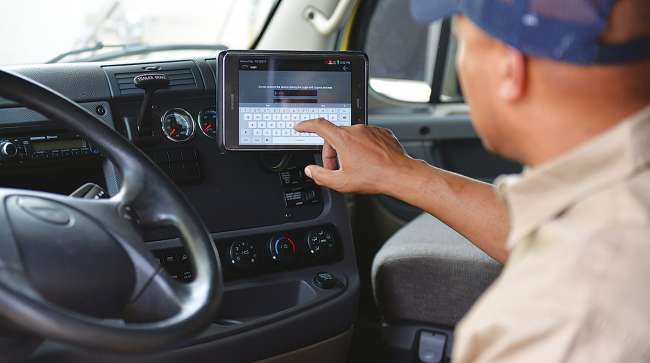
The telematics-for-trucking market experienced a dramatic explosion in growth over the past three years, driven primarily by the federally mandated rollout of electronic logging devices across most of the longhaul trucking sector.
Now that the industry has made that transition to electronic logs, the telematics market is bound to undergo a shakeout because there are more ELD suppliers than the industry needs, some technology vendors said.
But the overall market will continue to grow, suppliers said, as they add fleet management features and enhanced customer support to their product offerings.
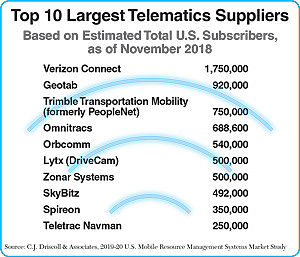
U.S. trucking telematics revenue — derived from fleet management systems and ELDs — has doubled since 2015, to $1.1 billion, “mostly due to the ELD mandate,” said Clem Driscoll, president of research firm C.J. Driscoll & Associates.
The ELD rule, which went into effect in December 2017, requires most longhaul carriers to use electronic logs instead of paper logbooks to record drivers’ hours of service.
Today, about 3 million ELDs — and older electronic logging systems known as automatic onboard recording devices, or AOBRDs — are in service, according to Driscoll’s 2019-20 U.S. Mobile Resource Management Systems Market Study released in January.
Three million “is a big number,” Driscoll said.
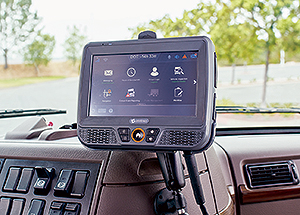
Fleets using grandfathered e-log systems classified as AOBRDs have until Dec. 16 to make the transition to ELD software. (Omnitracs)
Even though the rush to comply with the ELD mandate is now over, there’s still a lot of revenue to be made by adding fleet management features; maintaining, servicing and replacing units; and training users and offering customer support, he said. “I don’t see the revenue for telematics in the trucking sector dropping off substantially.”
An obvious change wrought by the mandate was “a huge influx of competitors,” said Eric Witty, vice president of product for Trimble Transportation Mobility. Some consolidation has occurred, and Witty and other vendors said they expect to see more.
“There can’t be that many suppliers,” Witty said. “It just doesn’t work.”
Witty said he expects consolidation to continue until the market settles down a bit.
Verizon Connect has grown extensively through Verizon Communications’ acquisitions of Fleetmatics and Telogis.
Andrew Oleson, compliance product lead for Verizon Connect, predicts the number of companies in the telematics market will shrink as customers look for technology providers with extensive industry knowledge and experience.
Some companies already have withdrawn or discontinued their ELD products, including One20 and ZED Connect.
“Developing an ELD is a difficult task, and some of them just didn’t work,” Driscoll said.
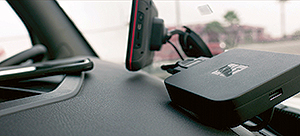
ELD vendors such as KeepTruckin are adding new features such as dash cameras and data analytics. (KeepTruckin)
“But there have been some big success stories,” he said, citing KeepTruckin and BigRoad, and adding that ERoad has been successful.
They and other ELD vendors are adding fleet management features to their offerings beyond the core electronic logging functionality, he said.
BigRoad was acquired by Fleet Complete nearly two years ago, in March 2017. Since then, Fleet Complete, which provides fleet management systems, has been adding to BigRoad’s offerings. A freight-matching platform, BigRoad Freight, and a video telematics system were launched last year, said Marc Moncion, Fleet Complete’s head of safety, compliance and regulatory affairs.
“Inspect,” a mobile platform for electronic driver vehicle inspection reports integrated with BigRoad, is due to be launched within weeks, Moncion told Transport Topics in late January.
Another major change in the market has been “commoditization of ELDs and the basic functions of telematics,” Trimble’s Witty said, resulting in increased price pressure.
“It’s really become a replacement environment,” Witty said. “Everybody has something, so you’re not walking into a fleet selling them telematics for the first time, probably, ever again.”
Instead, Witty said the effort involves “trying to sell them on why they should replace the systems they have with something new.”
Before the mandate, many carriers were resistant not only to ELDs, but to telematics in general, Witty said. “The challenge we had in the past was we couldn’t get them to adopt something. If it was full-featured, a little bit heavier, a little bit more expensive, they couldn’t justify the cost.”
Now that all have ELDs, some fleets are asking what else they can do with that platform, Witty and other vendors said.
Seth Spiel, head of product for telematics at KeepTruckin, said that mobile phones, affordable hardware and cloud software “essentially made a supremely lower barrier to entry.”
Telematics vendors said the features and services they have added or will be adding include onboard cameras for video capabilities; more computing prowess for analytics; and deeper engagement with fleet customers to help them get more out of their systems.
The incorporation of video is ongoing and critical to the development of telematics, vendors said. Many offer video as an option, or said they were preparing to.
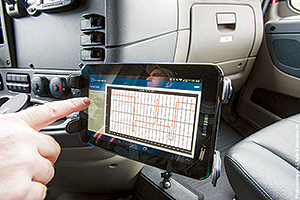
ELD supplier J.J. Keller said it plans to add an onboard video option to its product offerings. (J.J. Keller & Associates)
J.J. Keller & Associates plans to launch a video option in April, said CEO Rustin Keller. The dash-mounted device will be forward-facing, with an option to follow for a driver-facing camera, he said. Recording will be triggered by an event.
BigRoad, KeepTruckin, MiX Telematics, Trimble, Omnitracs and Verizon Connect all offer video capability to go with their onboard systems.
Video in general is useful for coaching better driving habits to prevent accidents, “and of course exoneration of truck drivers in accidents,” said Trimble’s Witty, who described video as “a pretty easy justification for most fleets.”
KeepTruckin added a dash-mounted video camera to its offerings in June. The camera integrates with the vendor’s ELD. It includes a scoring capability designed to help identify “driver behaviors predictive of high-dollar claims,” the company said.
The trucking telematics business is changing as carriers want more useful analysis of the data their systems are collecting, vendors said.
Verizon Connect’s Oleson reported a shift in customer demands, “specifically a desire for more data and a better understanding of that data.”
Customers are looking for one fleet management software that can centralize and analyze their data, he said.
J.J. Keller plans to add features to its fleet compliance platform, Encompass, designed to help fleets monitor motor vehicle reports and safety data in the federal Compliance, Safety, Accountability program, which can then be combined with HOS data and video data from the planned video option.
The aim is to assist motor carriers in creating a safety profile and to “develop a propensity for their drivers to be safe,” Keller said.
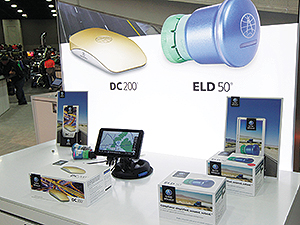
Rand McNally showcases its ELD systems at the 2018 Mid-America Trucking Show in Louisville, Ky. (John Sommers II for Transport Topics)
About two years ago, J.J. Keller created a “Managed Services” division to help customers monitor telematics and video data and assist with follow-up, such as corrective training. The division works with fleets whether they use a J.J. Keller product or another vendor’s system. In the latter case, a data-sharing agreement is required among the system vendor, the user and J.J. Keller.
Another supplier, MiX Telematics, last year established an online help desk where customers can create a ticket and follow its progress, said Adam Bruttell, vice president of sales and marketing. In the case of a malfunctioning or inoperative ELD, regulations allow eight days for repairs, Bruttell noted; the help desk enables customers to track the ticket for that repair.
Although the ELD mandate has been in effect for more than a year, more change is coming for fleets that continue to use AOBRDs, which were grandfathered for two additional years under the ELD rule.
On Dec. 16, that exemption for AOBRDs will expire, and those users must begin using ELDs.
Of the 3 million ELDs and telematics systems that Driscoll estimated are in service, “probably close to half” are AOBRDs, he said.
“I’m not the only one who suspects there will be some issues there,” Driscoll said. “They could be nasty.”
Over-the-air software changes are the method some onboard vendors said they would use for the changeover.
Driscoll said, “It’s kind of overly optimistic to think that it’ll be a totally painless transition from AOBRDs that are in the field to ELDs. I think the answer is that in some cases, it’ll be easy and in some cases it won’t be.”
The majority of Omnitracs customers were running AOBRDs prior to the ELD mandate — some as far back as 20 years ago, said Tom Cuthbertson, vice president of regulatory compliance. The telematics provider already has carried out the transition to the ELD software for some customers and will be doing more between now and the December deadline, Cuthbertson said.
“We know what it takes to do it,” he said. “We have five products that will be moving forward.”
All will do so via software changes made over the air, Cuthbertson said.
KeepTruckin said fleets using its system in AOBRD mode can fully transition to ELD compliance “in seconds” through a switch in the dashboard without any hardware changes or time-consuming app updates.



